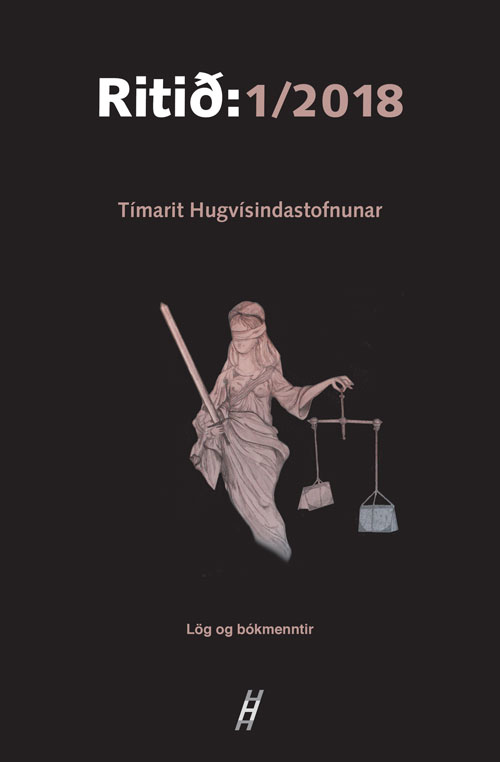Seigfljótandi siðaskipti
Viðhorf og staðalmyndir í siðaskiptarannsóknum
Abstract
Greinin er rituð í tilefni þess að 500 ár eru liðin frá upphafi siðbótarstarfs Marteins Lúthers sem miðað er við 1517. Leitast er við að benda á ný sjónarmið sem vert er að hafa í huga við rannsóknir á helstu afleiðingum siðbótarinnar á pólitísku sviði (siðskipti) og menningar- og/eða félagslegu sviði (siðbreyting). Í þessu sambandi er bent á að við rannsóknir á svo flóknum sögulegum ferlum og siðaskiptin eru sé óhjákvæmilegt að ganga út frá fyrirfram völdum viðmiðum sem þjóna sem forsendur fyrir túlkun á viðfangsefninu hverju sinni — í þessu tilviki siðaskiptunum.
Bent er á að hingað til hafi verið gengið út frá nokkuð einhliða byltingarviðhorfi sem gerir ráð fyrir að siðaskiptin hafi orðið hér skyndilega og þá að meira eða minna leyti af pólitískum ástæðum, þ.e. vegna viðleitni Kristjáns III Danakonungs til að auka eignir sínar, ítök og völd hér á landi og hafi hann notið til þess fulltingis helstu trúnaðarmanna sinna.
Í greininni eru færð rök að því að tengsl trúar og pólitíkur hafi verið mun flóknari á þessum tíma en almennt hafi verið gert ráð fyrir sem og að Kristján III og menn hans hafi litið svo á að það væri kristileg skylda þeirra að koma hér á siðaskiptum og að þeir hafi með því leitast við að svara ákalli Lúthers um að koma kirkjunni til bjargar á grundvelli fagnaðarerindisins. Þá er litið svo á að siðaskiptin á Íslandi hafi falist í hægfara þróun á tímabilinu um 1539–1600 sem og að þróunin hafi flætt yfir fjölmörg svið á vettvangi trúar, kirkju, samfélags og menningar.
-----------
Viscous Reformation.
New Paradigms and Stereotypes in Studies of the Reformation in Iceland
This article is written on the occasion of the 500 years anniversary of the Lutheran reformation (siðbót) which started in 1517. The aim is to point out new perspectives worth considering in research on the main implications of the reformation in the political field (siðaskipti) and cultural and / or social field (siðbreyting). In this regard, it is pointed out that in researches of such a complex historical process is inevitable to assume pre-defined pardigms that can serve as prerequisites for the interpretation of the subject.
It is also pointed out that, up to present time, a single one-sided paradigm which describes the reformation as a revolution has been assumed in Icelandic studies of the reformation which assumes that the transition from a catholic to a lutheran church in Iceland has been sudden and for more or less political reasons, ie. for the efforts of Christian the III:rd of Denmark to increase his assets, properties and power in the country.
The article argues that the relationships between religion and politics was much more complexed at this time than has generally been expected, as well as that Christina the III:rd and his representatives in Iceland considered it as their duties as christians to promote the reformation in the country and in that way respond to the demand of Luther to the christian nobility to rescue the Church on the basis of the gospel.
In the article it is assumed that the reformation in Iceland happened in the period 1539-1600 and the development took place on various religious, ecclesial, political and cultural fields. In that way it is meaningful to describe it as a viscous reformation.

